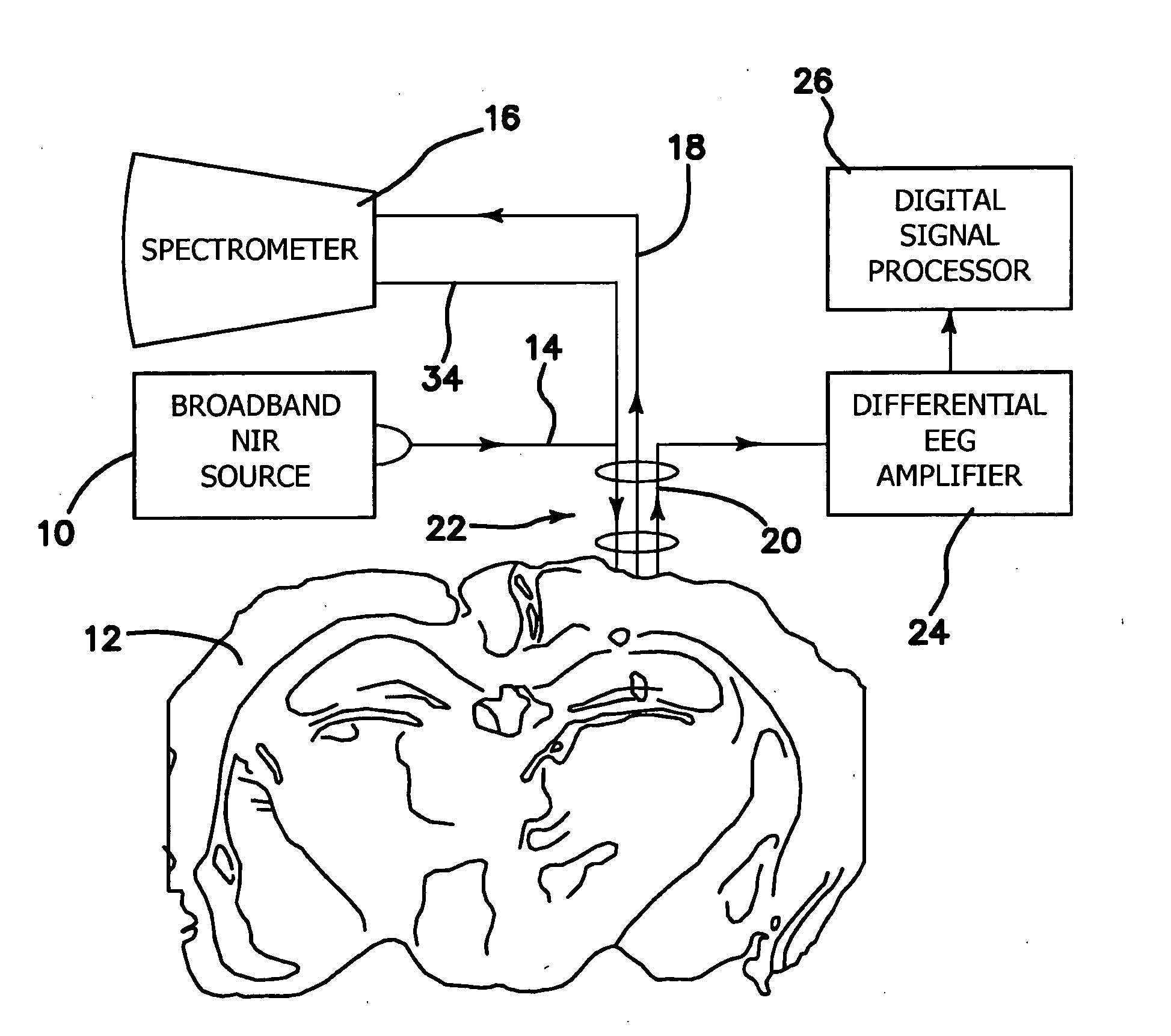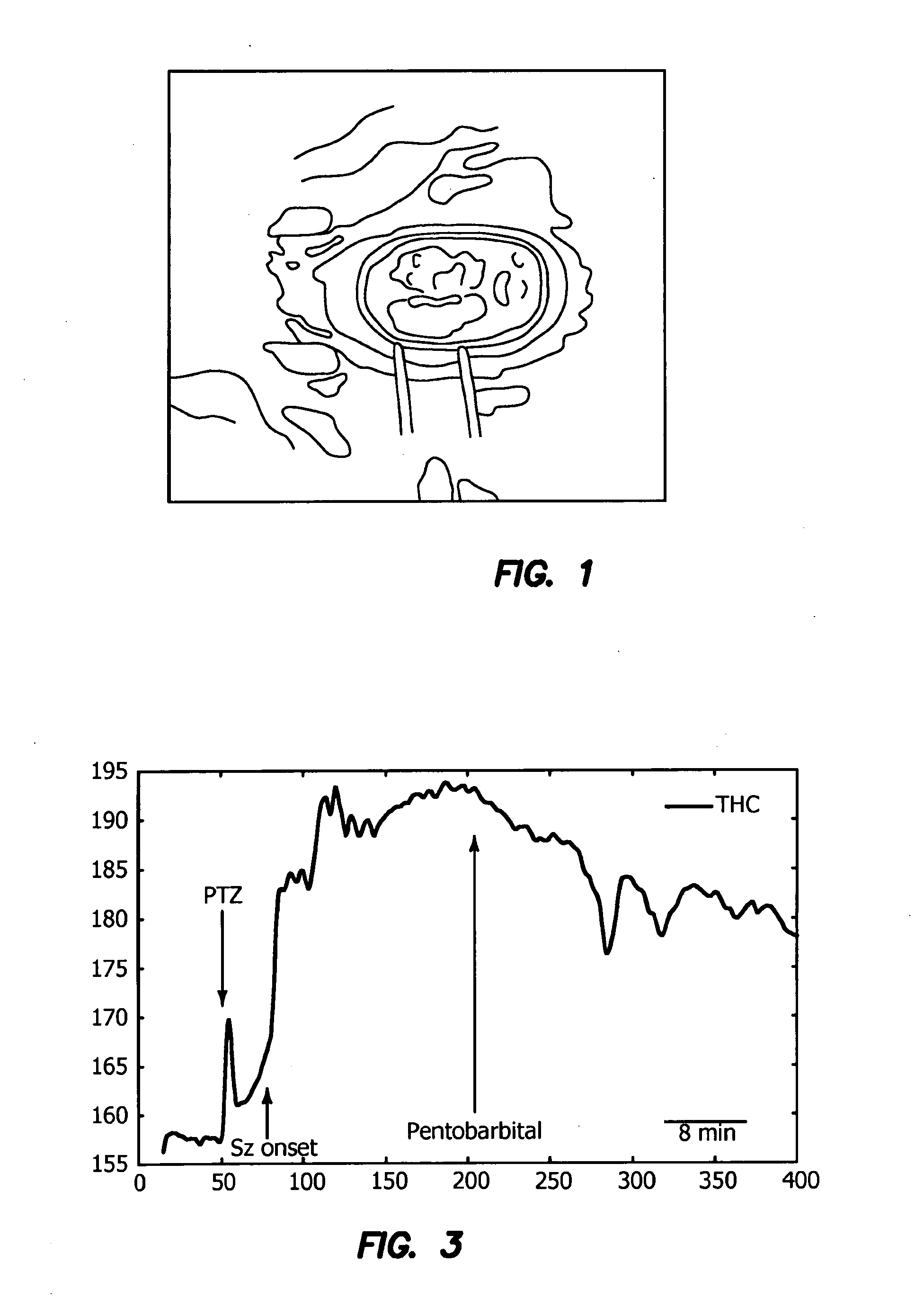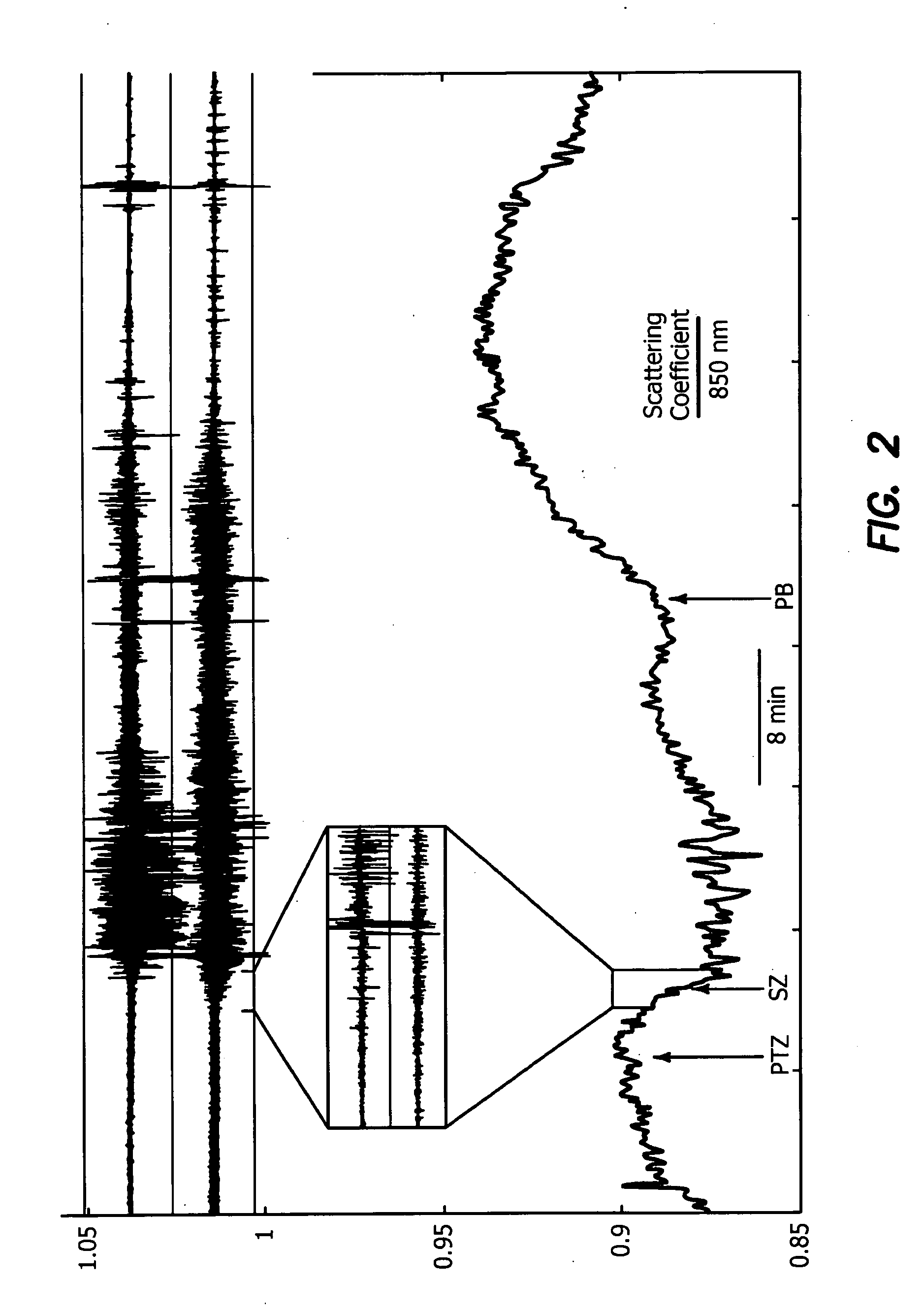Optical detection of seizure, a pre-seizure state, and cerebral edema and optical fiber detection of the same
a seizure and seizure state technology, applied in the field of neural seizure detection and brain tissue edema detection methods, can solve the problem that scattering changes cannot be detected at small source-to-detector separation, and achieve the effect of reducing the degree of optical scattering by neural brain tissu
- Summary
- Abstract
- Description
- Claims
- Application Information
AI Technical Summary
Benefits of technology
Problems solved by technology
Method used
Image
Examples
Embodiment Construction
[0049]The apparatus of the illustrated embodiment measures diffuse reflectance, which at close source-detector fiber separations has been shown to correlate strongly with changes in the scattering coefficient of the brain tissue 12. This is the first study to describe the individual contribution of light scattering to the optical signal change before and during seizure activity. Our findings provide proof of principle for optical detection of a pre-seizure state on a clinically relevant timescale.
[0050]The illustrated embodiment of the invention in a laboratory demonstration as diagrammatically depicted in FIG. 4 utilizes a source 10, which illuminates the brain tissue 12 with either broadband or specific wavelengths of radiation in the visible, near-infrared, and / or infrared region, through a delivery optic fiber 14 and a detector 16 through an optic fiber 18 to measure changes in signal intensity associated with seizure or pre-seizure activity. The source 10 and detector 16 are co...
PUM
 Login to View More
Login to View More Abstract
Description
Claims
Application Information
 Login to View More
Login to View More - R&D
- Intellectual Property
- Life Sciences
- Materials
- Tech Scout
- Unparalleled Data Quality
- Higher Quality Content
- 60% Fewer Hallucinations
Browse by: Latest US Patents, China's latest patents, Technical Efficacy Thesaurus, Application Domain, Technology Topic, Popular Technical Reports.
© 2025 PatSnap. All rights reserved.Legal|Privacy policy|Modern Slavery Act Transparency Statement|Sitemap|About US| Contact US: help@patsnap.com



